Abstract
Baboons responded on a choice task on which discrete trials involved choosing between an intravenous injection of heroin (.32 or 1.0 mg/kg) or the availability of food pellets. An intertrial interval of three hours followed the completion of each trial. Under baseline conditions baboons consistently completed the eight available trials each day. Typically, animals chose heroin on three or four trials a day and food on the remaining trials. Animals tended to space the selection of heroin rather than choosing heroin on consecutive trials. A series of single-day experimental manipulations was undertaken to characterize performance further. Manipulation of the heroin dose produced shifts in the relative frequency of choosing the drug option which were inversely related to dose. Manipulation of number of pellets per food trial produced little change in distribution of choices. Noncontingent administration of morphine produced dose-related decreases in relative frequency of heroin choices, and a higher dose decreased the number of trials completed. Noncontingent naloxone produced dose-related increases in the relative frequency of heroin choices. Noncontingent secobarbital had no effect on distribution of choices, and high doses reduced the number of trials completed per day. The results suggest that morphine and naloxone produce shifts in this choice behavior by selectively interacting with the reinforcing properties of the option involving heroin.
Full text
PDF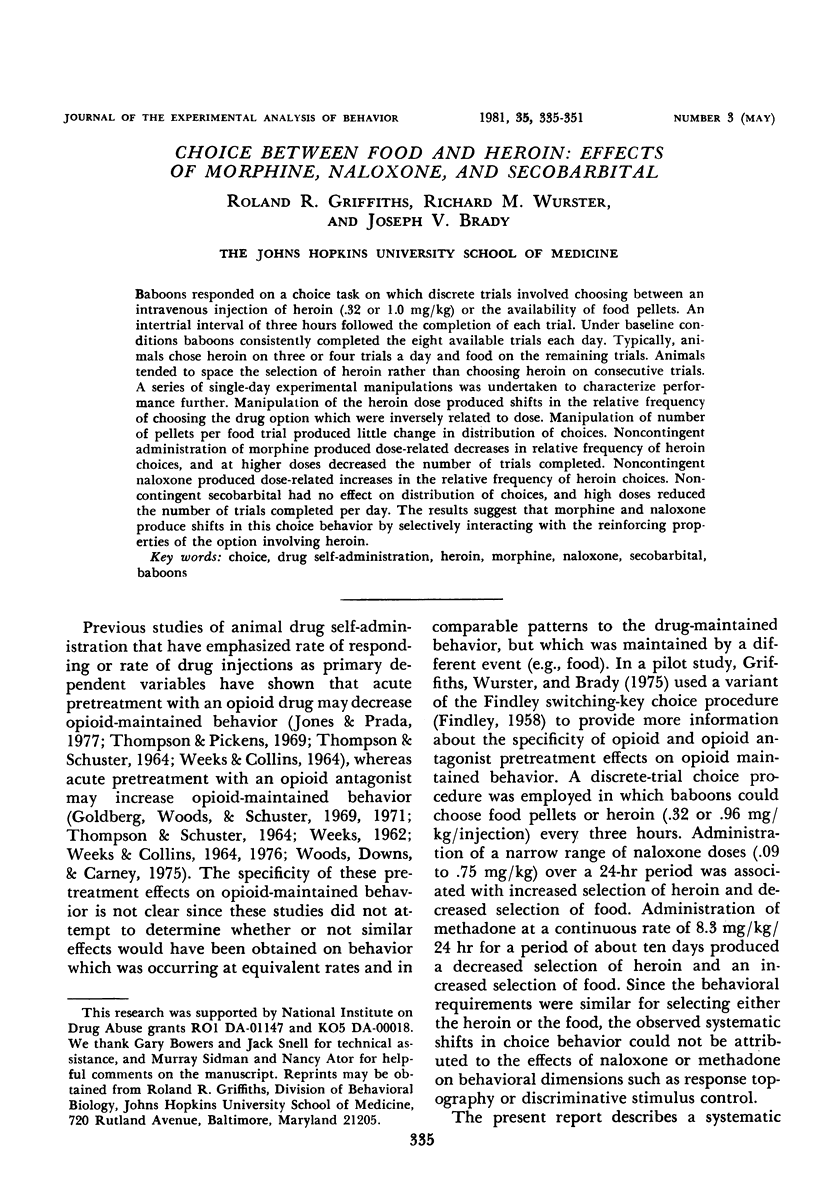
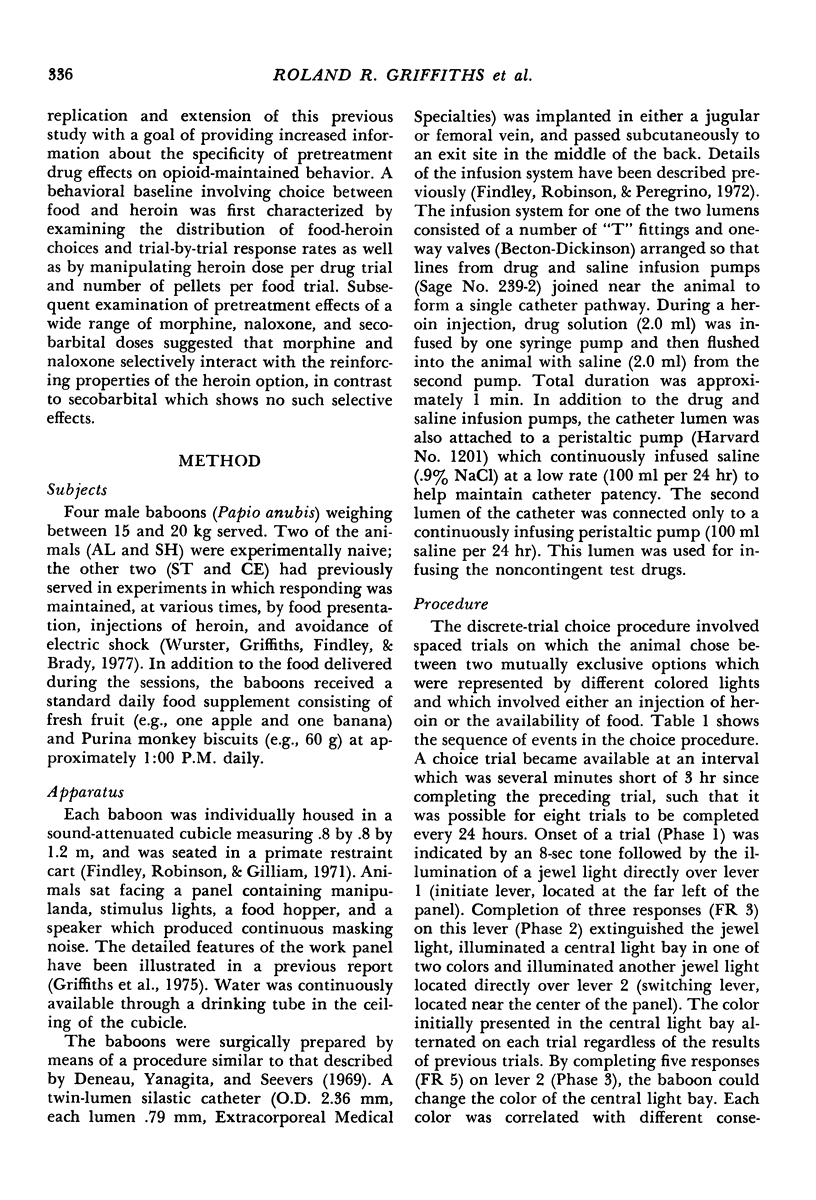
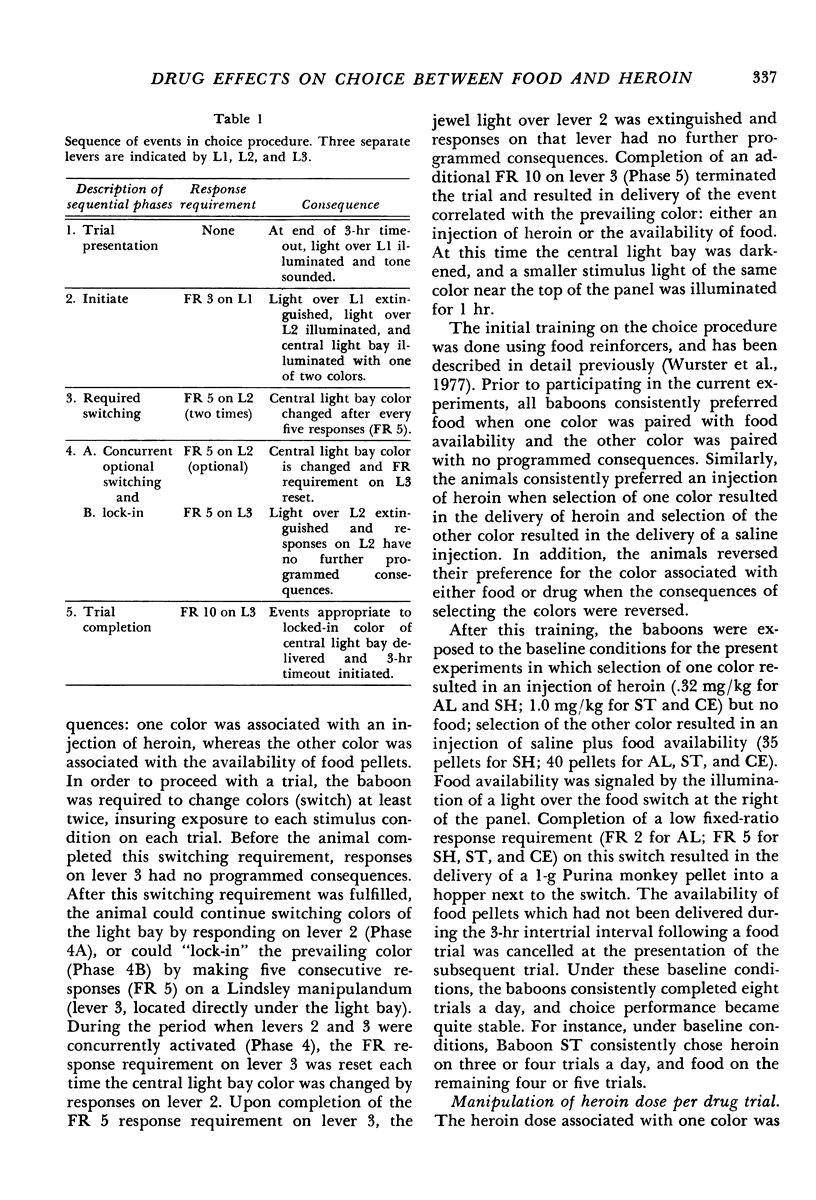
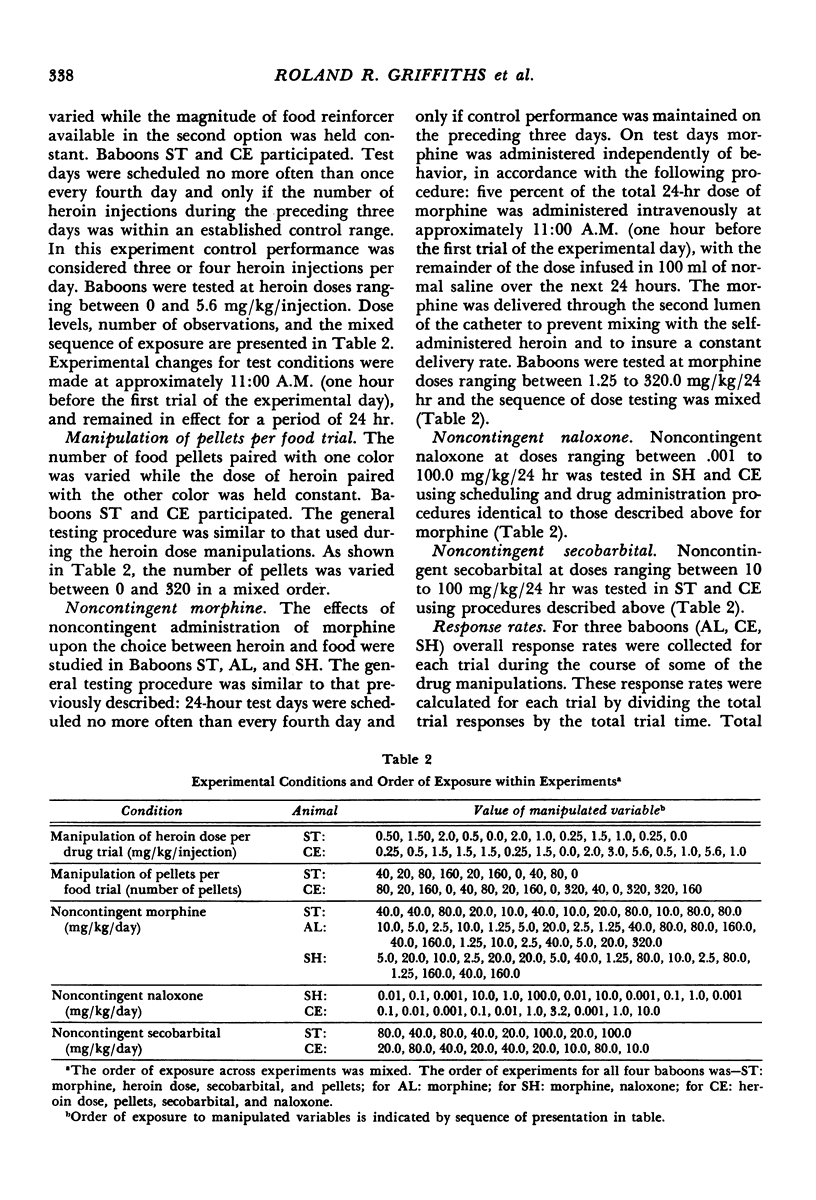
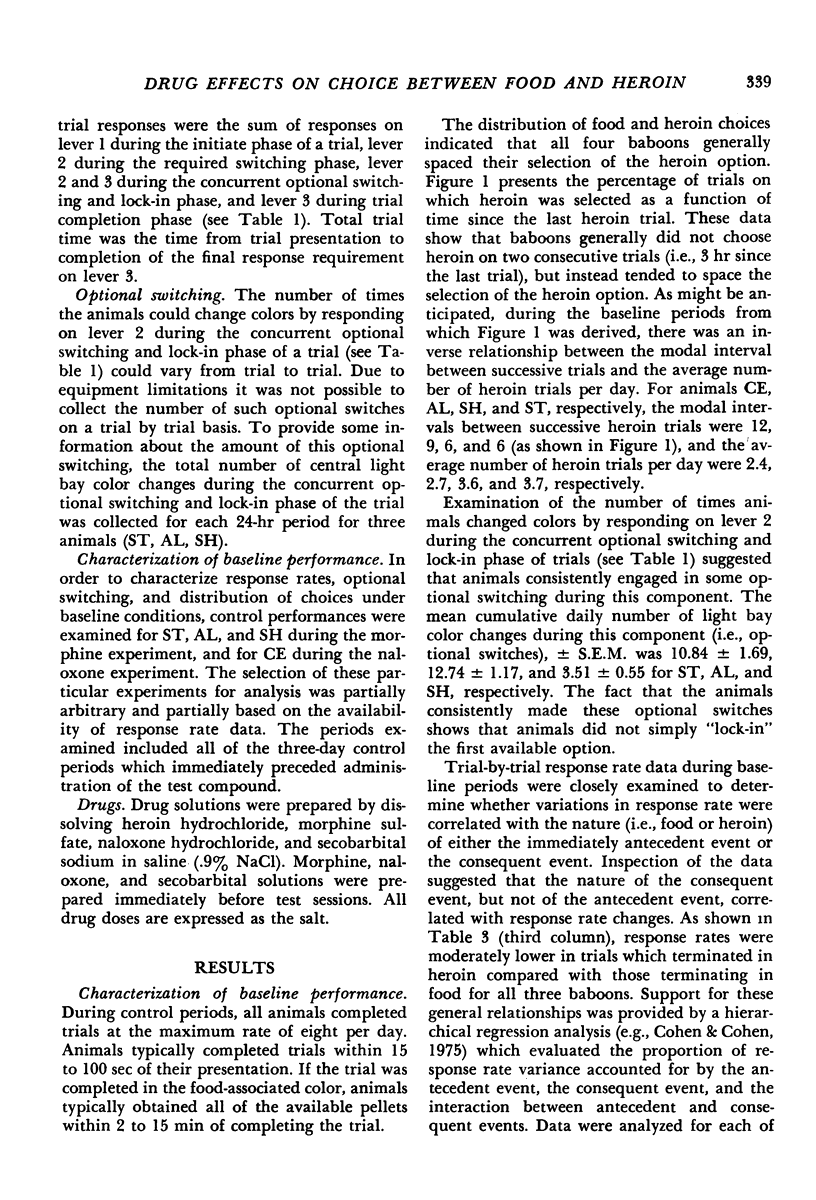
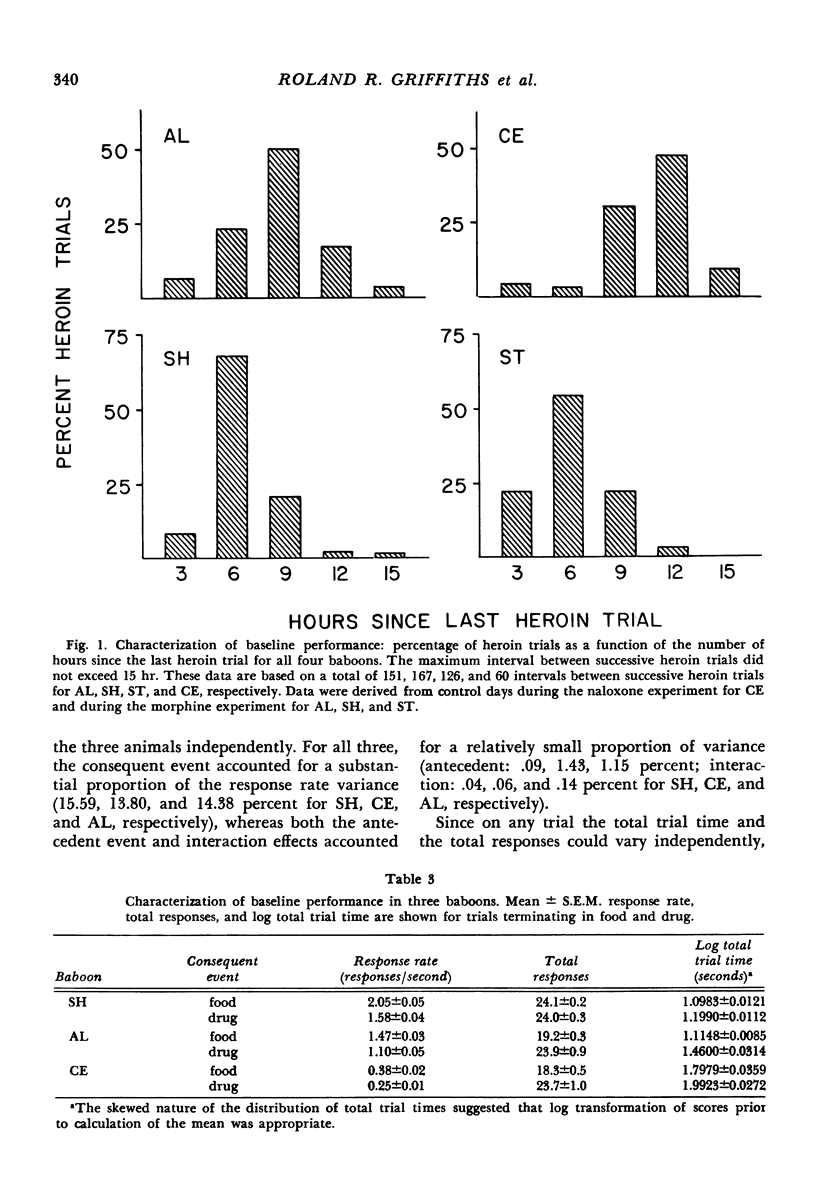
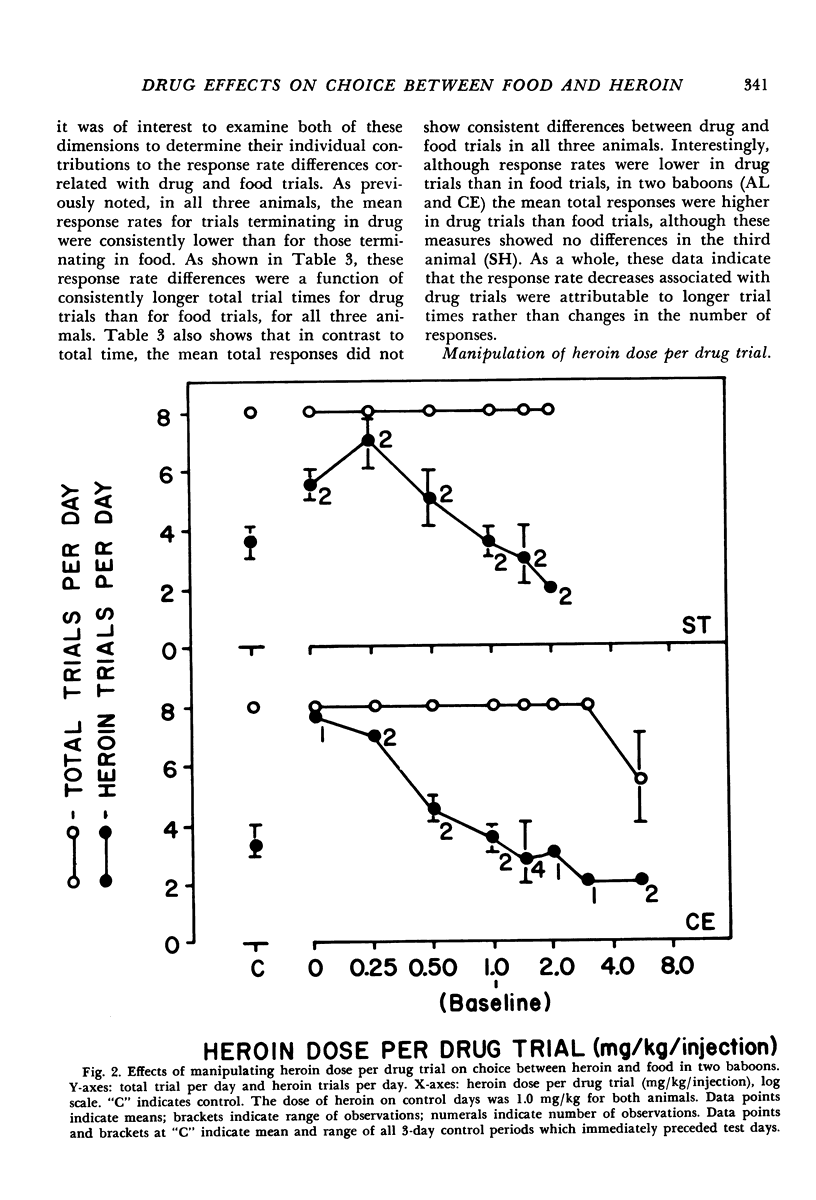
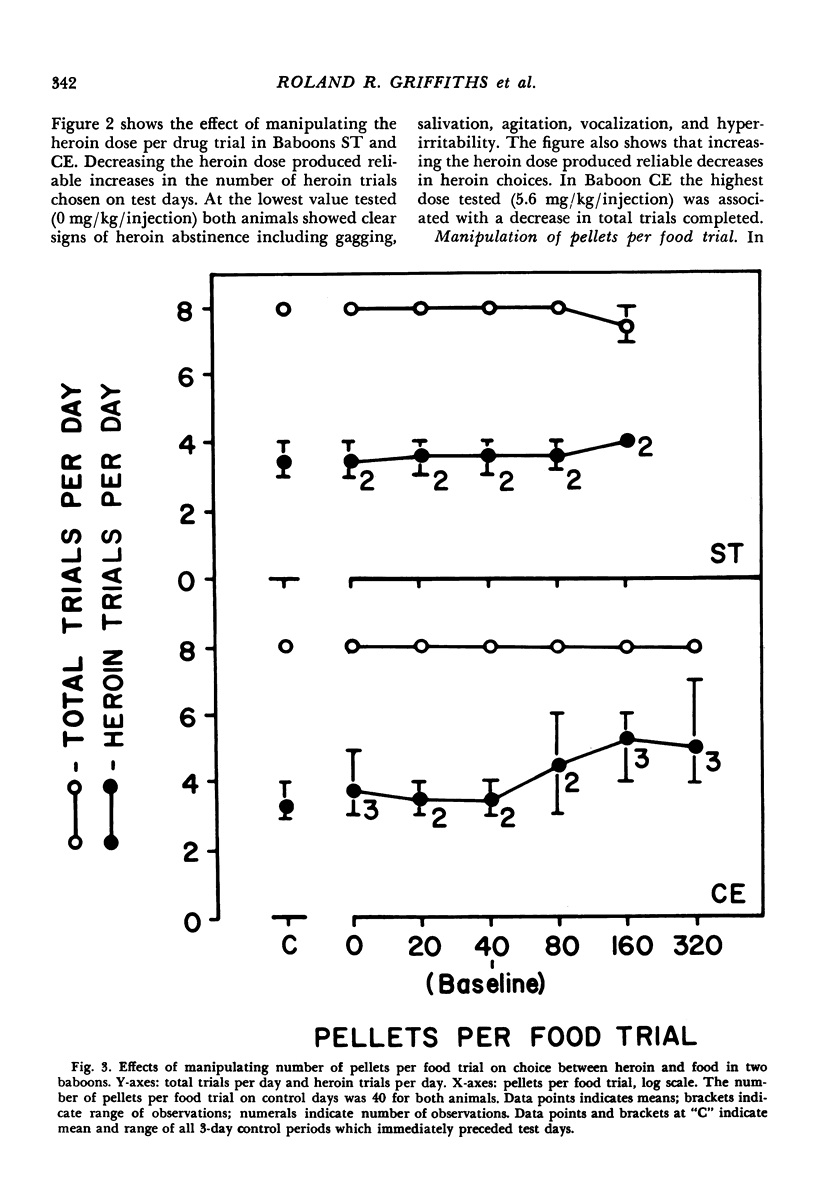
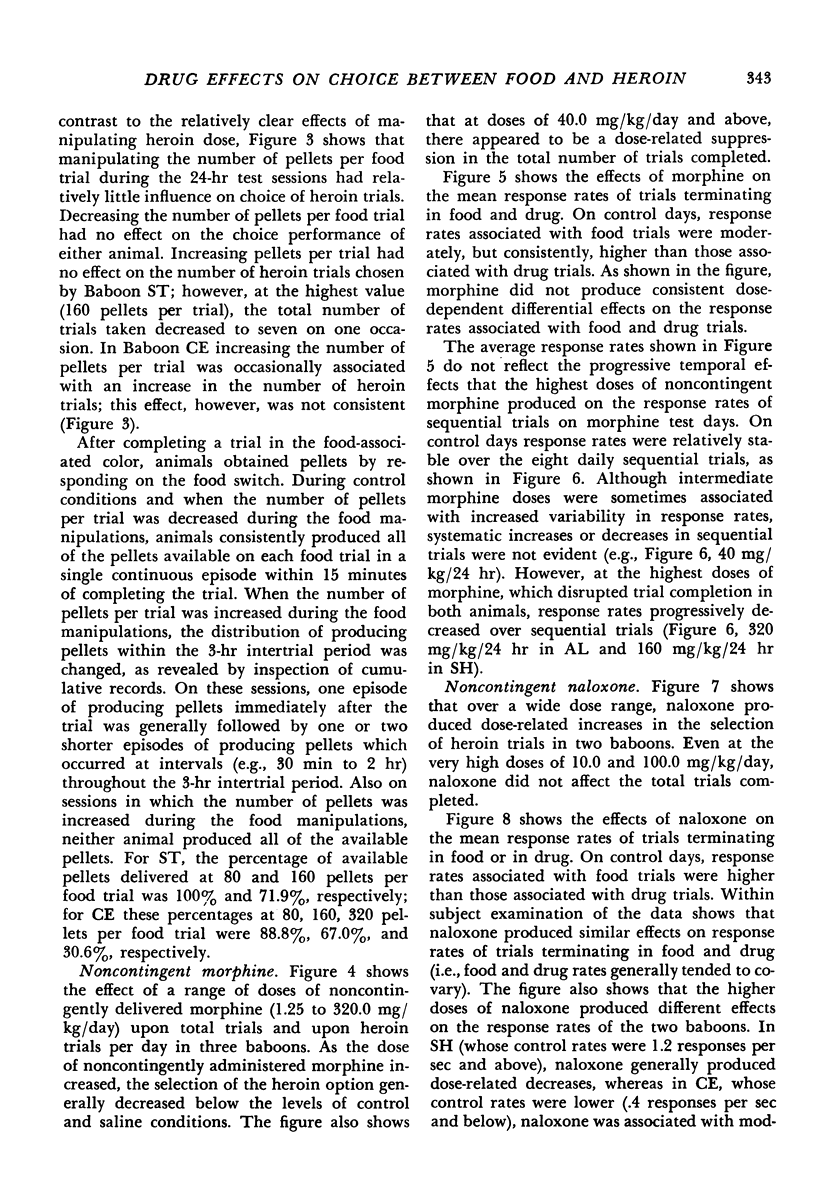
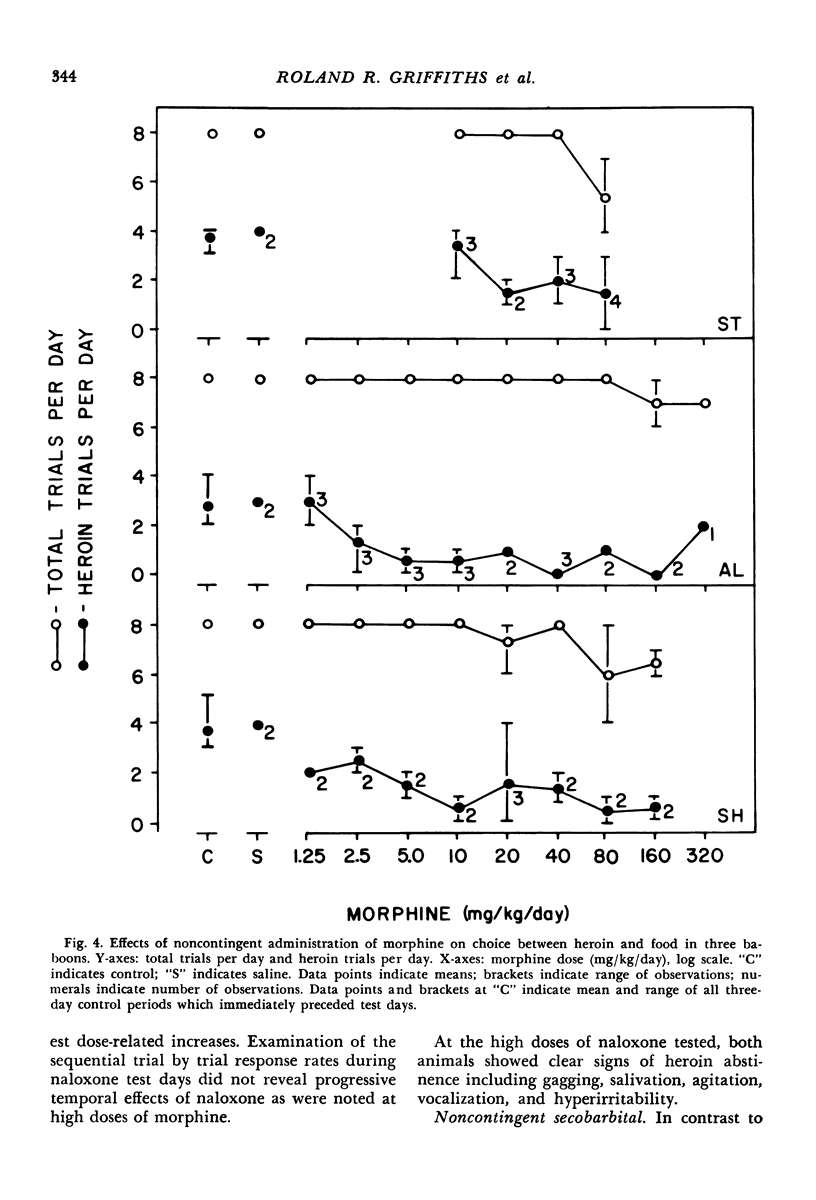
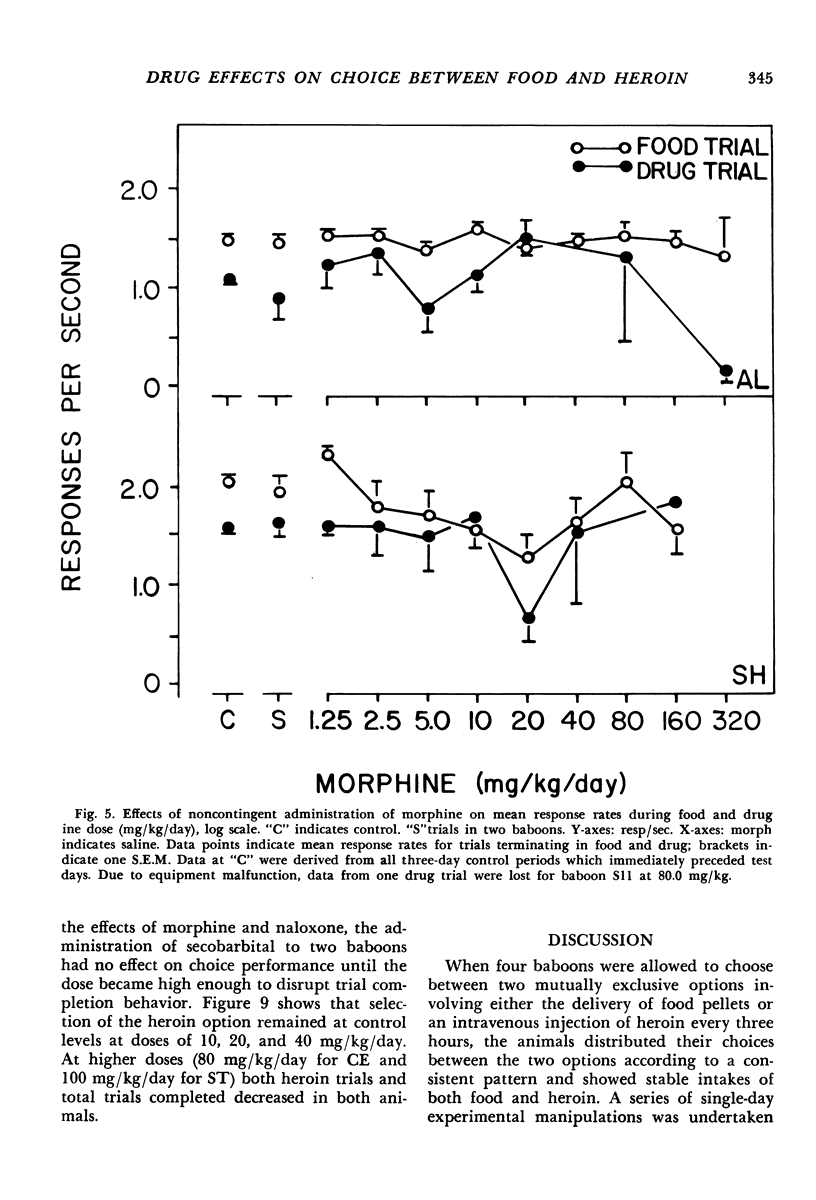
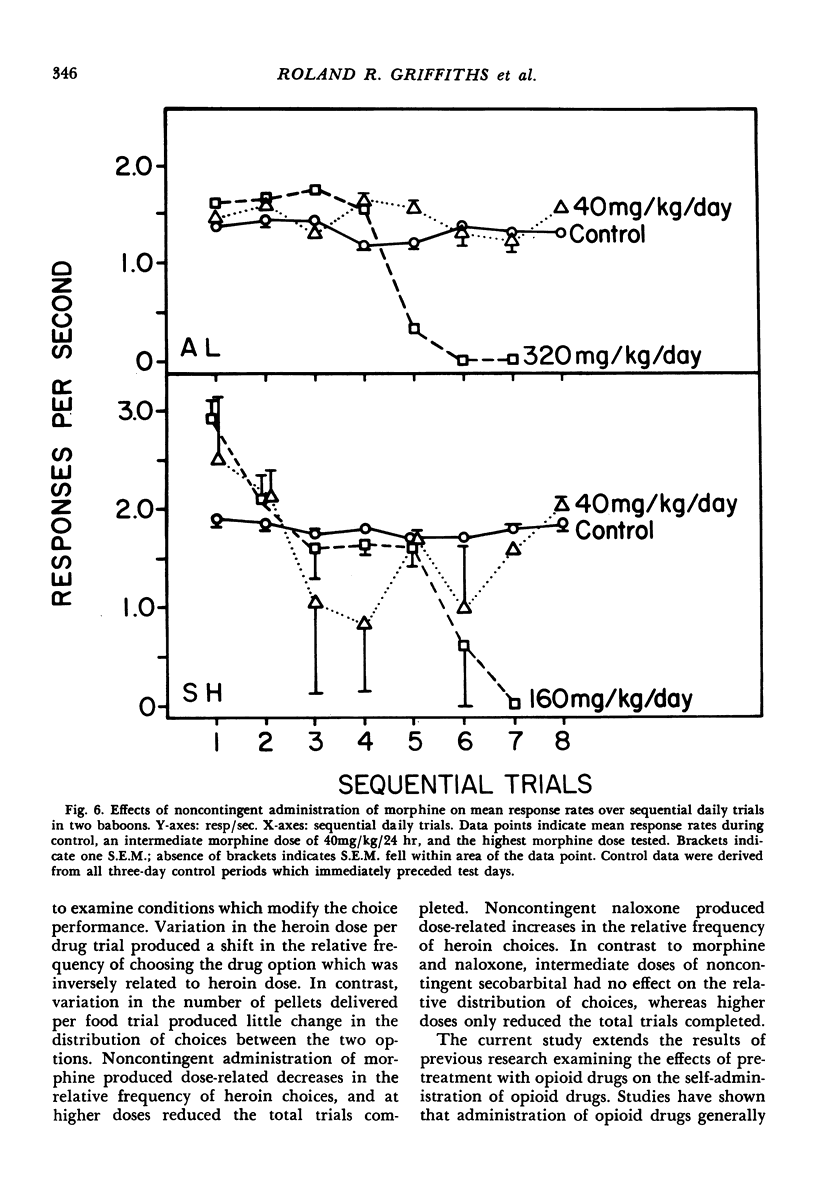
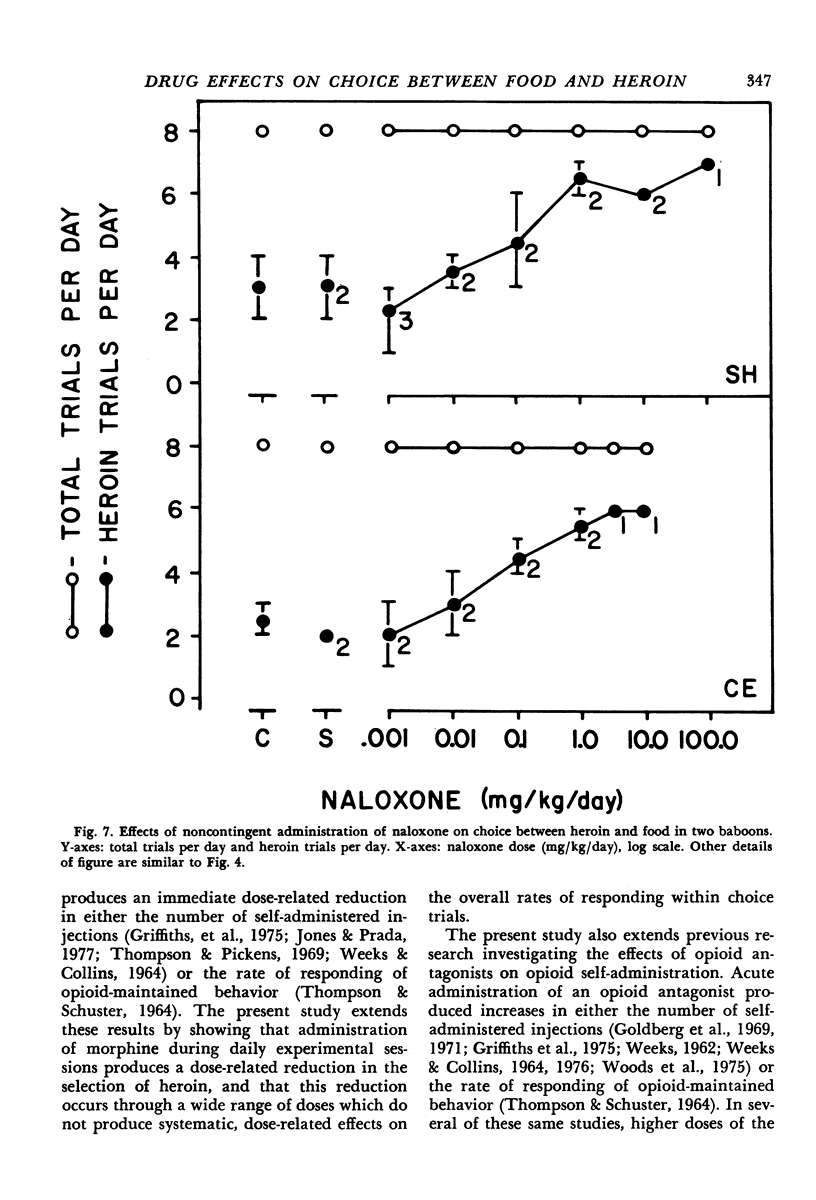
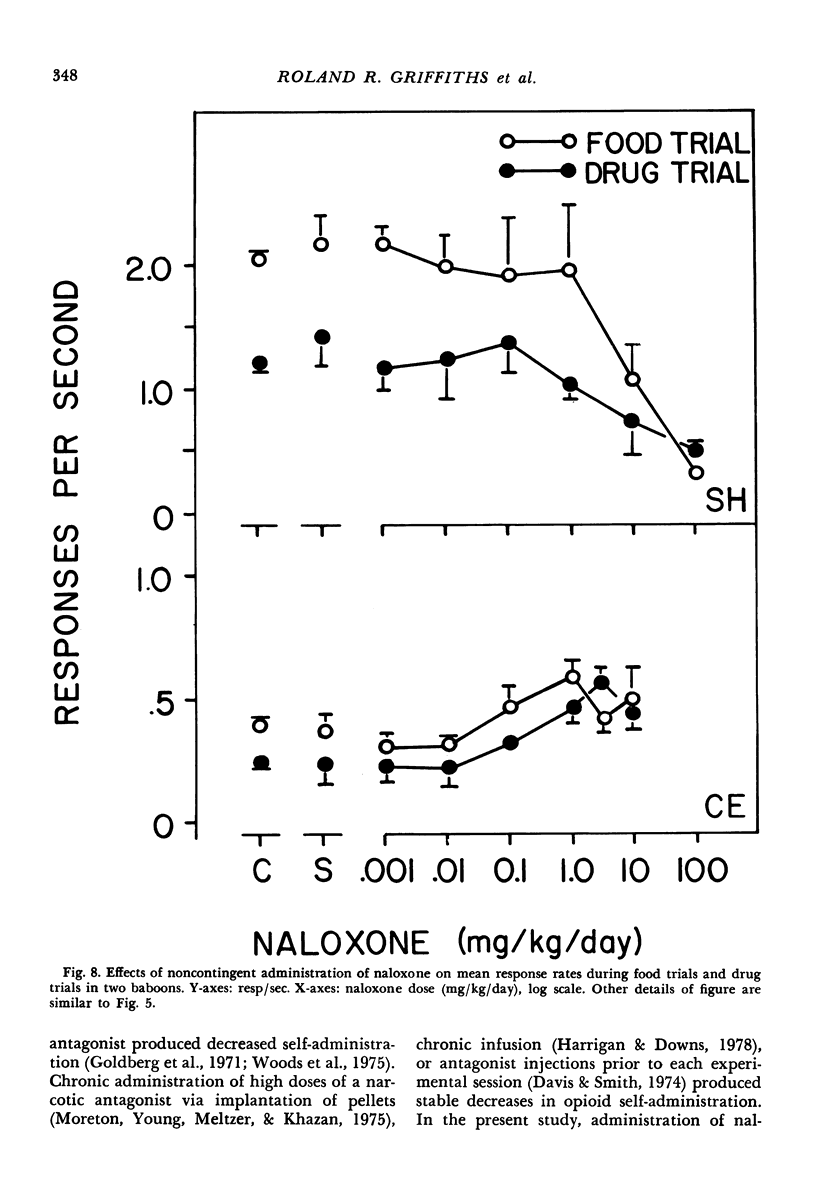
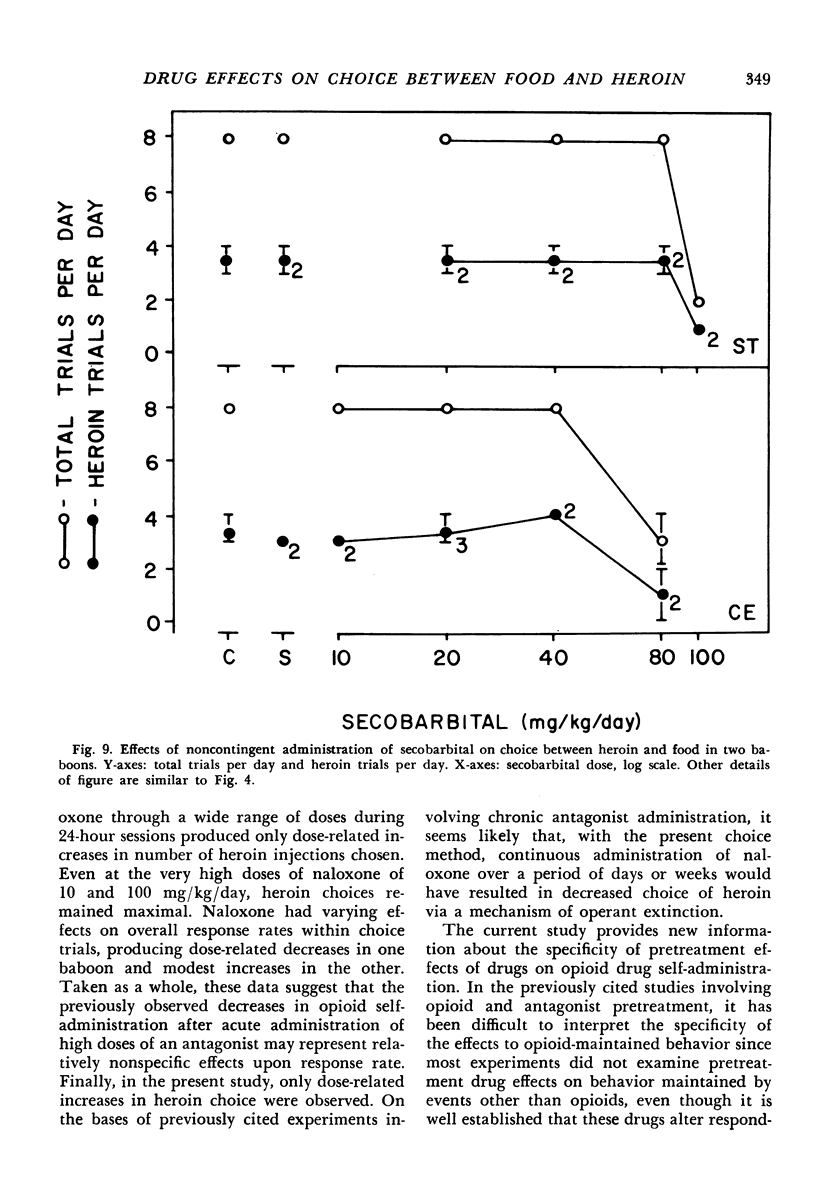
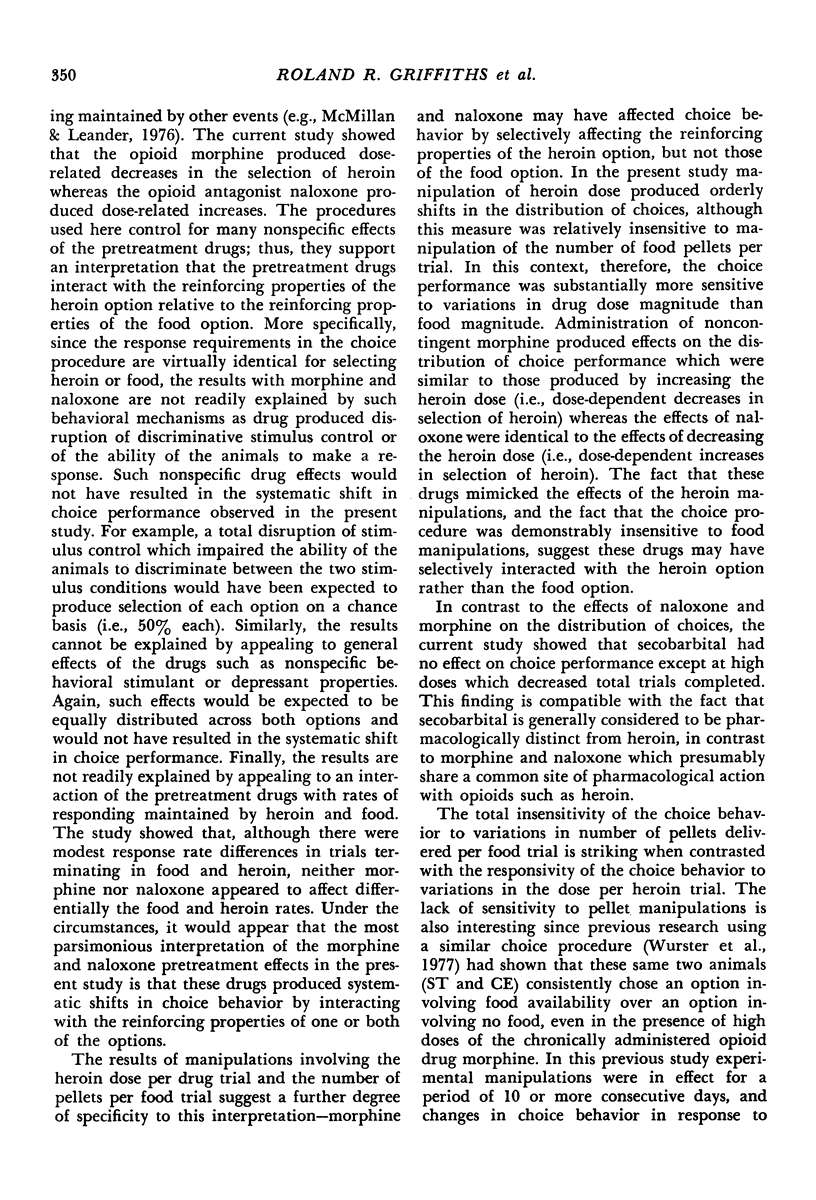
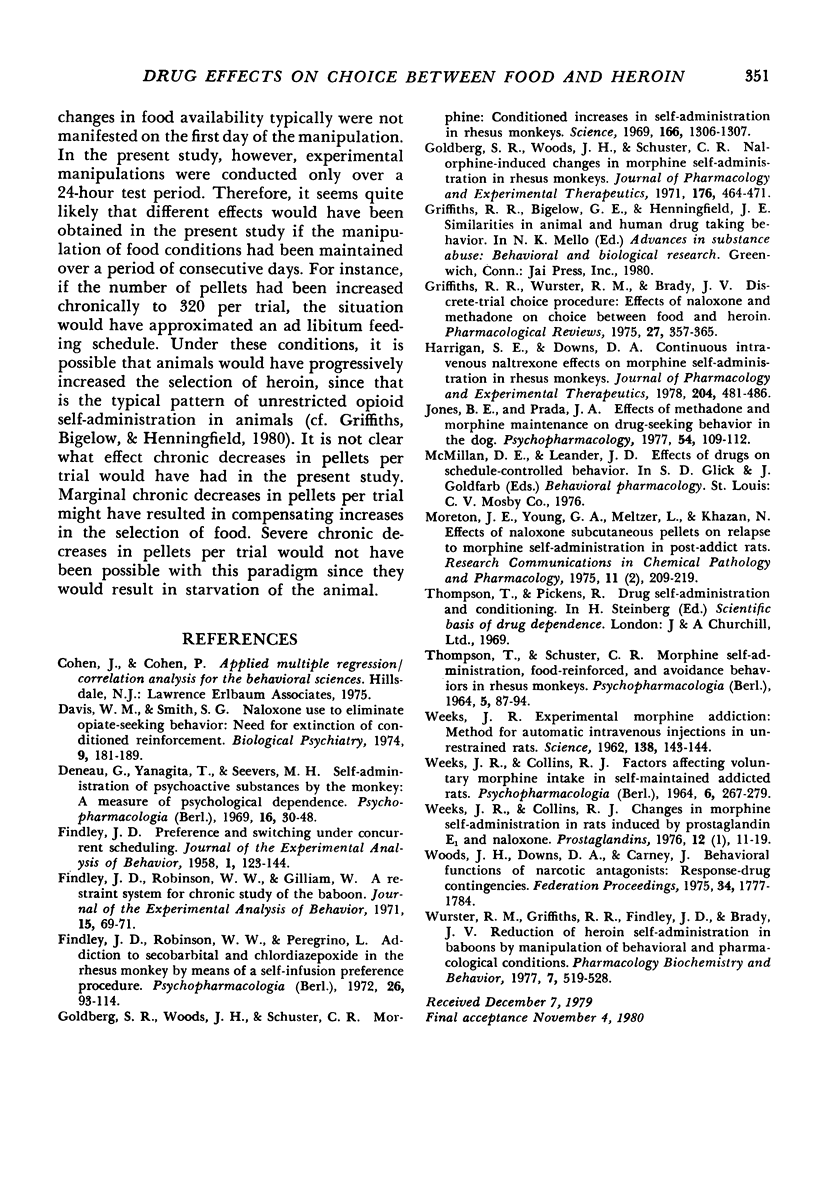
Selected References
These references are in PubMed. This may not be the complete list of references from this article.
- Davis W. M., Smith S. G. Naloxone use to eliminate opiate-seeking behavior: need for extinction of conditioned reinforcement. Biol Psychiatry. 1974 Oct;9(2):181–189. [PubMed] [Google Scholar]
- Deneau G., Yanagita T., Seevers M. H. Self-administration of psychoactive substances by the monkey. Psychopharmacologia. 1969;16(1):30–48. doi: 10.1007/BF00405254. [DOI] [PubMed] [Google Scholar]
- Findley J. D. Preference and Switching under Concurrent Scheduling. J Exp Anal Behav. 1958 Apr;1(2):123–144. doi: 10.1901/jeab.1958.1-123. [DOI] [PMC free article] [PubMed] [Google Scholar]
- Findley J. D., Robinson W. W., Gilliam W. A restraint system for chronic study of the baboon. J Exp Anal Behav. 1971 Jan;15(1):69–71. doi: 10.1901/jeab.1971.15-69. [DOI] [PMC free article] [PubMed] [Google Scholar]
- Findley J. D., Robinson W. W., Peregrino L. Addiction to secobarbital and chlordiazepoxide in the rhesus monkey by means of a self-infusion preference procedure. Psychopharmacologia. 1972;26(2):93–114. doi: 10.1007/BF00422097. [DOI] [PubMed] [Google Scholar]
- Goldberg S. R., Woods J. H., Schuster C. R. Morphine: conditioned increases in self-administration in rhesus monkeys. Science. 1969 Dec 5;166(3910):1306–1307. doi: 10.1126/science.166.3910.1306. [DOI] [PubMed] [Google Scholar]
- Goldberg S. R., Woods J. H., Schuster C. R. Nalorphine-induced changes in morphine self-administration in rhesus monkeys. J Pharmacol Exp Ther. 1971 Feb;176(2):464–471. [PubMed] [Google Scholar]
- Griffiths R. R., Wurster R. M., Brady J. V. Discrete-trial choice procedure: effects of naloxone and methadone on choice between food and heroin. Pharmacol Rev. 1975 Sep;27(3):357–365. [PubMed] [Google Scholar]
- Harrigan S. E., Downs D. A. Continuous intravenous naltrexone effects on morphine self-administration in rhesus monkeys. J Pharmacol Exp Ther. 1978 Feb;204(2):481–486. [PubMed] [Google Scholar]
- Jones B. E., Prada J. A. Effects of methadone and morphine maintenance on drug-seeking behavior in the dog. Psychopharmacology (Berl) 1977 Oct 20;54(2):109–112. doi: 10.1007/BF00426764. [DOI] [PubMed] [Google Scholar]
- Moreton J. E., Young G. A., Meltzer L., Khazan N. Effects of naloxone subcutaneous pellets on relapse to morphine self-administration in post-addict rats. Res Commun Chem Pathol Pharmacol. 1975 Jun;11(2):209–219. [PubMed] [Google Scholar]
- THOMPSON T., SCHUSTER C. R. MORPHINE SELF-ADMINISTRATION, FOOD-REINFORCED, AND AVOIDANCE BEHAVIORS IN RHESUS MONKEYS. Psychopharmacologia. 1964 Jan 7;5:87–94. doi: 10.1007/BF00413045. [DOI] [PubMed] [Google Scholar]
- WEEKS J. R. Experimental morphine addiction: method for automatic intravenous injections in unrestrained rats. Science. 1962 Oct 12;138(3537):143–144. doi: 10.1126/science.138.3537.143. [DOI] [PubMed] [Google Scholar]
- Weeks J. R., Collins R. J. Changes in morphine self-administration in rats induced by prostaglandin E1 and naloxone. Prostaglandins. 1976 Jul;12(1):11–19. doi: 10.1016/s0090-6980(76)80003-2. [DOI] [PubMed] [Google Scholar]
- Weeks J. R., Collins R. J. Factors affecting voluntary morphine intake in self-maintained addicted rats. Psychopharmacologia. 1964 Oct 14;6(4):267–279. doi: 10.1007/BF00413156. [DOI] [PubMed] [Google Scholar]
- Woods J. H., Downs D. A., Carney J. Behavioral functions of narcotic antagonists: response-drug contingencies. Fed Proc. 1975 Aug;34(9):1777–1784. [PubMed] [Google Scholar]
- Wurster R. M., Griffiths R. R., Findley J. D., Brady J. V. Reduction of heroin self-administration in baboons by manipulation of behavioral and pharmacological conditions. Pharmacol Biochem Behav. 1977 Dec;7(6):519–528. doi: 10.1016/0091-3057(77)90248-9. [DOI] [PubMed] [Google Scholar]


